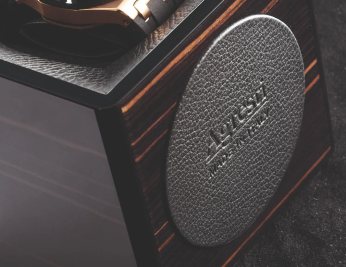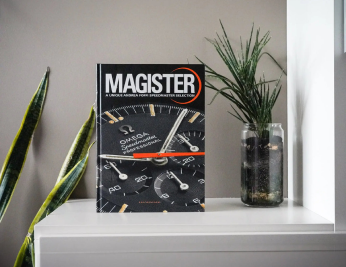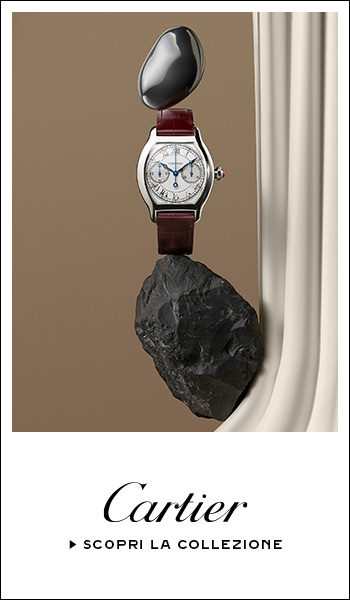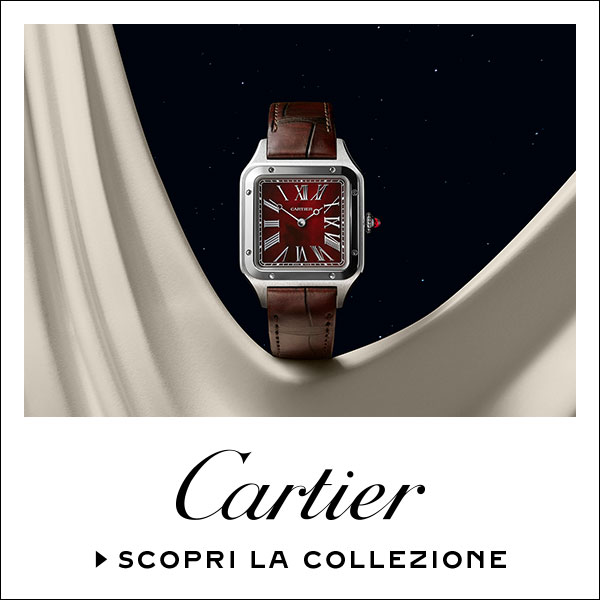Although it may not be widely known, the story of Audemars Piguet is forever tied to the perpetual calendar, one of the most fascinating complications in the field of horology.
I’m sure that everyone’s at least heard of the Royal Oak Perpetual Calendar, with some being more familiar than others. This is the model where Audemars Piguet often flaunts their technical and design prowess. However, this complication made its debut in the Audemars Piguet portfolio long before the Royal Oak was even conceptualised.
In fact, the century-old relationship between AP and the perpetual calendar has origins which are yet to be investigated.
1875 – The Beginnings
One of the very first timepieces to feature the perpetual calendar complication (from any brand) was made by none other than Jules Louis Audemars in 1875.
The timepiece was manufactured as a “final project”, concluding his studies to gain the grandmaster watchmaker qualification, way before the Audemars Piguet company was founded.
As shown below, it’s a superbly made pocket watch in 18kt rose gold.
Not only does it have the famed perpetual calendar complication (the topic of this article), but it also features a quarter-hour minute repeater and an independent dead-seconds complication.
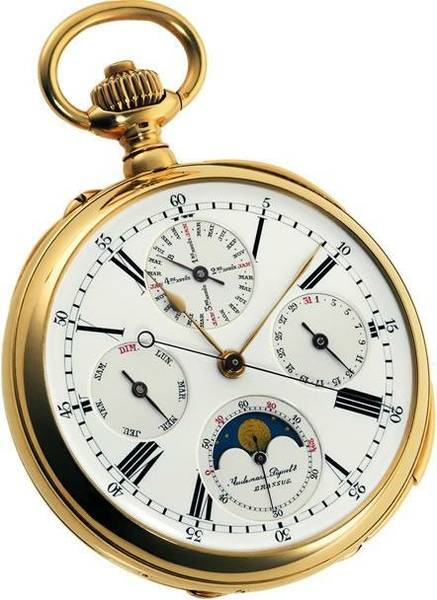
In the first few decades of the 1900s, Audemars manufactured a handful of perpetual and annual calendar pocket and wristwatches. However, as we will discuss later, these did not account for leap years.
This indicator, now included in all modern perpetual calendars, is a fundamental aspect which helps identify the type of calendar that the watch features.
To help our understanding of the timpieces we will discuss in this article, let’s briefly recap the various types.
Types of Calendars
First things first: a timepiece which features a leap year indicator is and always will be a perpetual calendar.
If absent, it is either a complete/annual calendar. However, it can still be a perpetual calendar: one which calculates for the leap year, does not “show it”.
Now, further defining the differences between them…
Complete Calendar: this is is the most “simple” complication.
This is because, for the months with less than 31 days, you have to manually adjust the date.
Annual Calendar: the “intermediate” complication.
These calibers account for the lengths of all the months except for February of a leap year. This means you only have to adjust the date once every four years.
Perpetual Calendar: the most “sophisticated” complication.
These watches account for everything described above. However, their dates must be manually adjusted during leap years which stray from the standard Gregorian Calendar (eg: 2100).
Quick bit of trivia: some brands have engineered a solution to overcome this caveat.
For example, when you buy an IWC perpetual calendar, they will reserve a “replacement” date wheel for the year 2101.
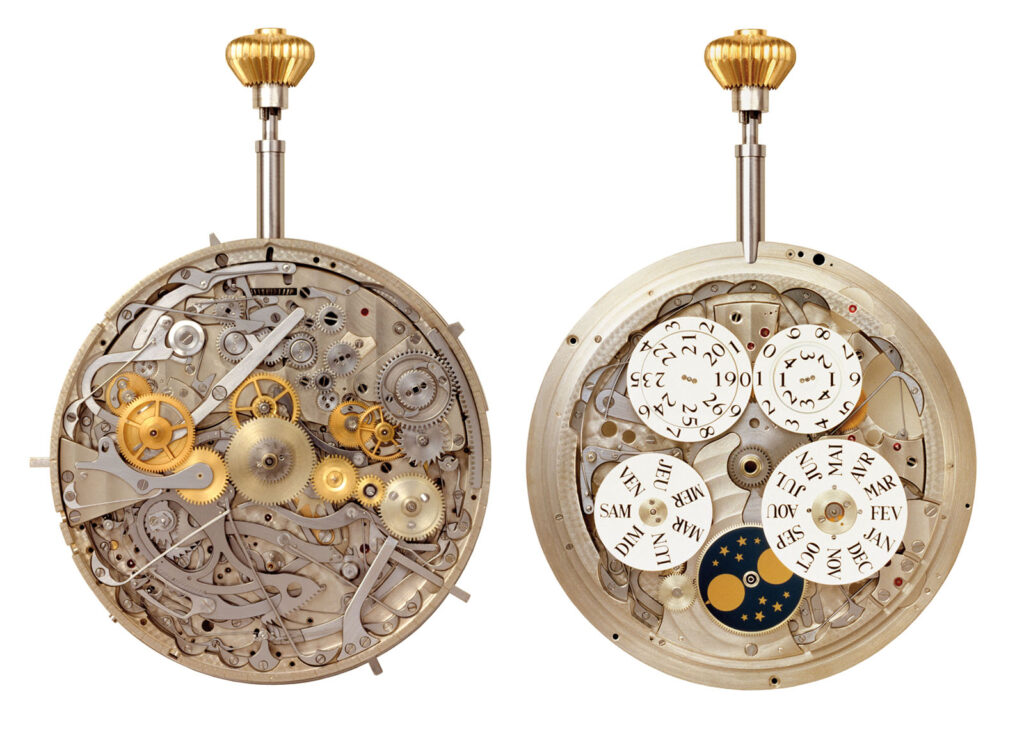
Instead, Patek Philippe’s cal. 89 features a 4-point cam which completes a quarter of a revolution every 100 years.
In fact, this movement is one of the slowest-moving in all of horology.
1948 – The Milestone ref. 5516
One of the main reasons why watchmakers frequently omitted the leap year indicator was simply due to space.
Pocket watches offered much more dial real estate when compared to wristwatches, so they thought it would be unwise to use a significant portion of that limited space for an indicator which would really only be useful once every four years.
That all changed, however, in 1948, when Audemars Piguet began producing their extremely limited run of the legendary ref. 5516.
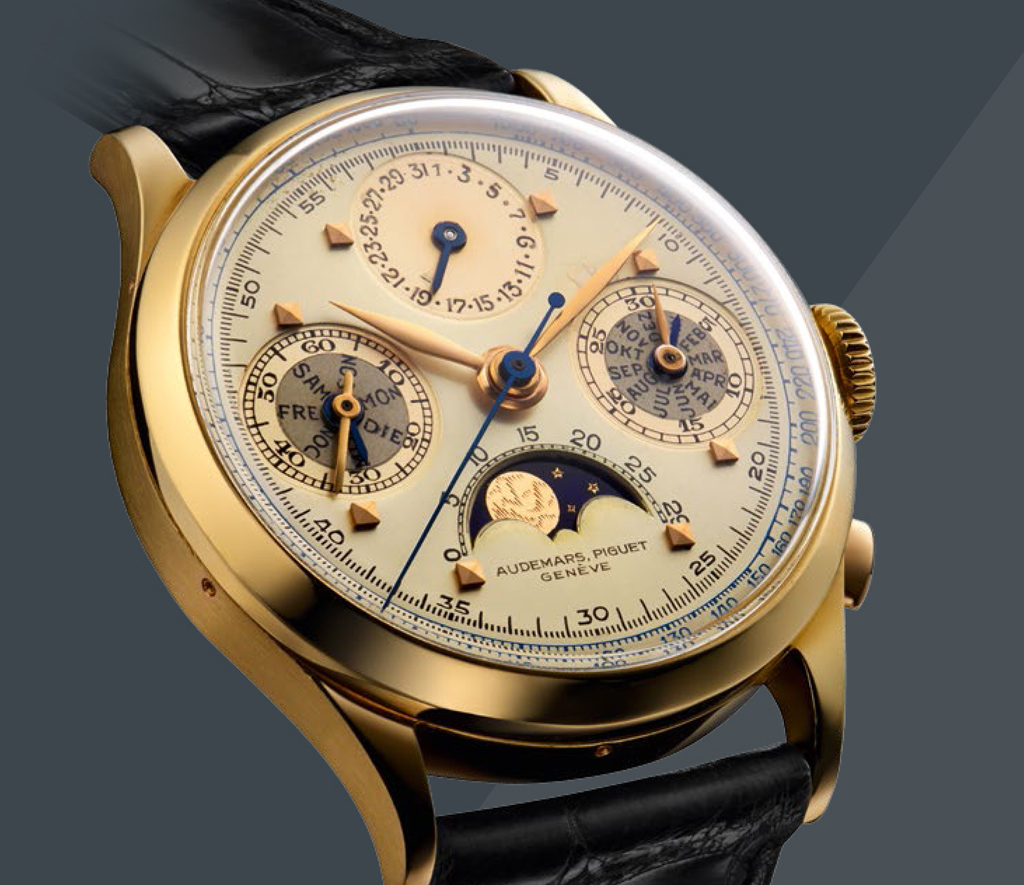
Although they were for all intents and purposes perpetual calendars, the first three exemplars produced in 1948 (sold in the early 50s), did not feature the visual leap year indicator.
They did however, have the date, day, month, and lunar phase complications, all in a 36.5mm case.
1955 – The incorporation of the leap year
A couple of years later, in 1955, nine more ref. 5516s were manufactured.
Finally, these perpetual calendar exemplars included the visual leap year indicator, also becoming the first wristwatches ever to do so.
Out of the 9 which were produced, only 7 are known to still exist. Of these, only one has a Tiffany & Co. double-signed dial, most likely made for an American client.
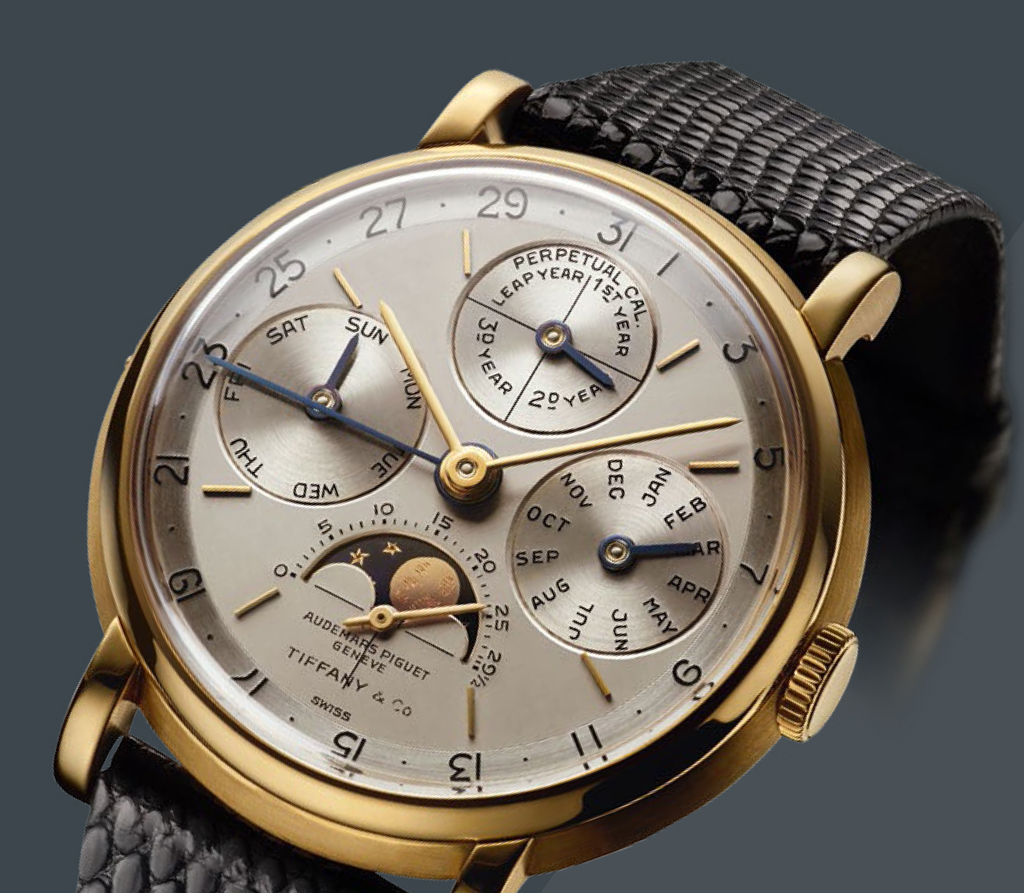
Within this “second series” of 9 exemplars, there are two key sub-series.
The first 3 (of 9), sold in 1959, are in the lunar phase at 12 and leap year indicator at 6 configuration.
Given its position at 6 o’clock, the subdial is slightly larger, which allows it to present all 48 month subdivisions of the 4 year cycle.
The subdial at 3, instead, features the classic 12-month display for better legibility.
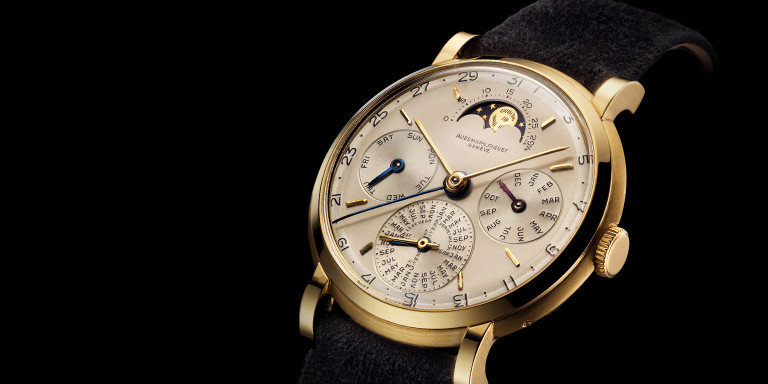
Conversely, the final 6 exemplars, sold from 1969 onwards, this configuration was inverted.
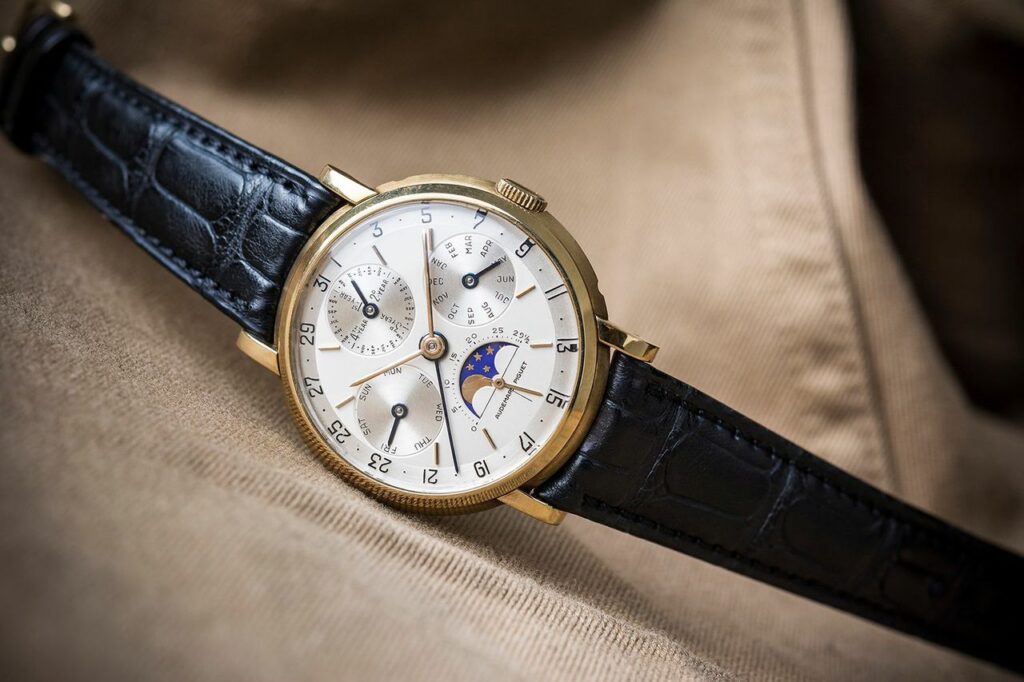
Although they became the first watchmaker to accomplish this task, Audemars Piguet abandoned the leap year indicator in successive models due to the reduced legibility that came with it.
1967 – The caliber 2120/2800.
In 1967, the cal.2120/2800 was born: an incredibly reliable and thin (for the time) perpetual calendar movement.
This caliber was co-designed by LeCoultre and Dubois Dèpraz, and was adopted by many big brands in the industry.
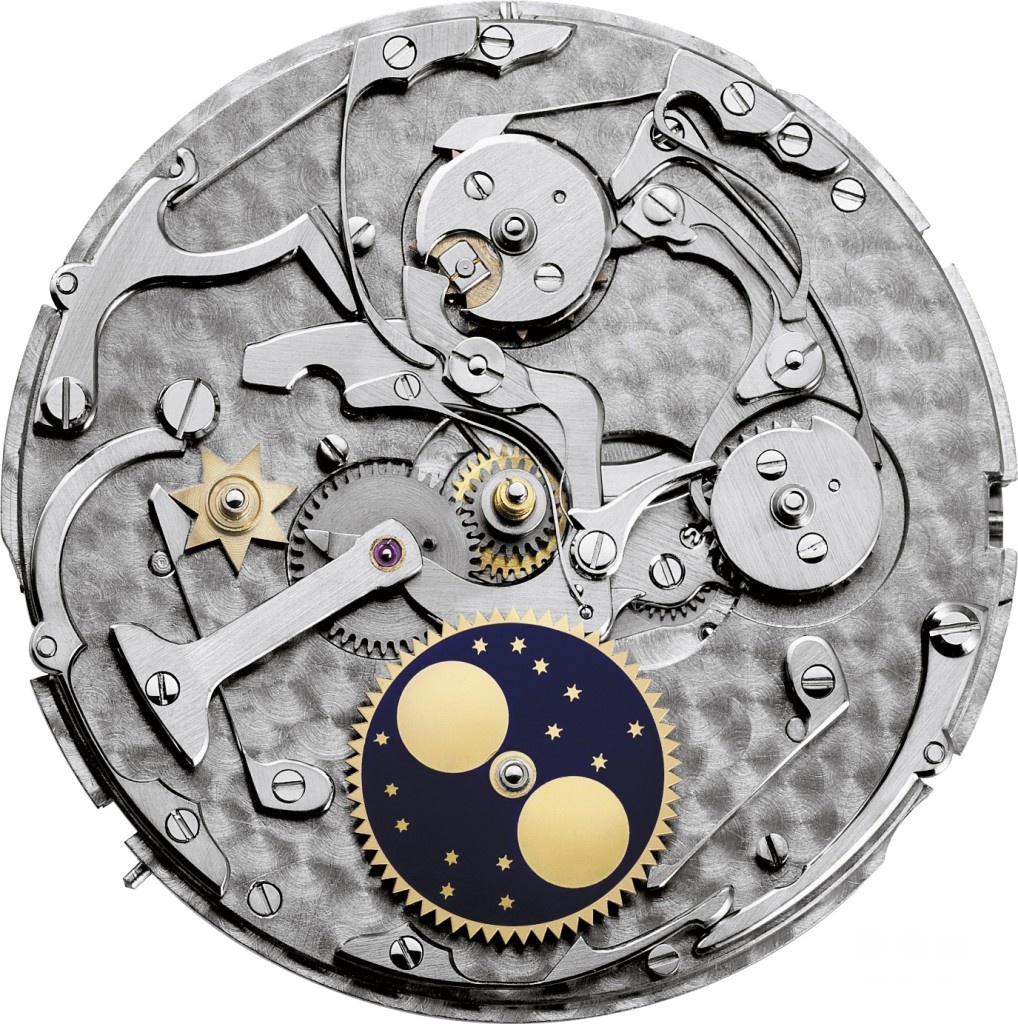
A mere 10 years later, in 1977, Audemars Piguet began to make “serially-produced” perpetual calendars, starting with the reference 5548.
This model utilises the aforementioned cal. 2120/2800 and remained in production until 1990.
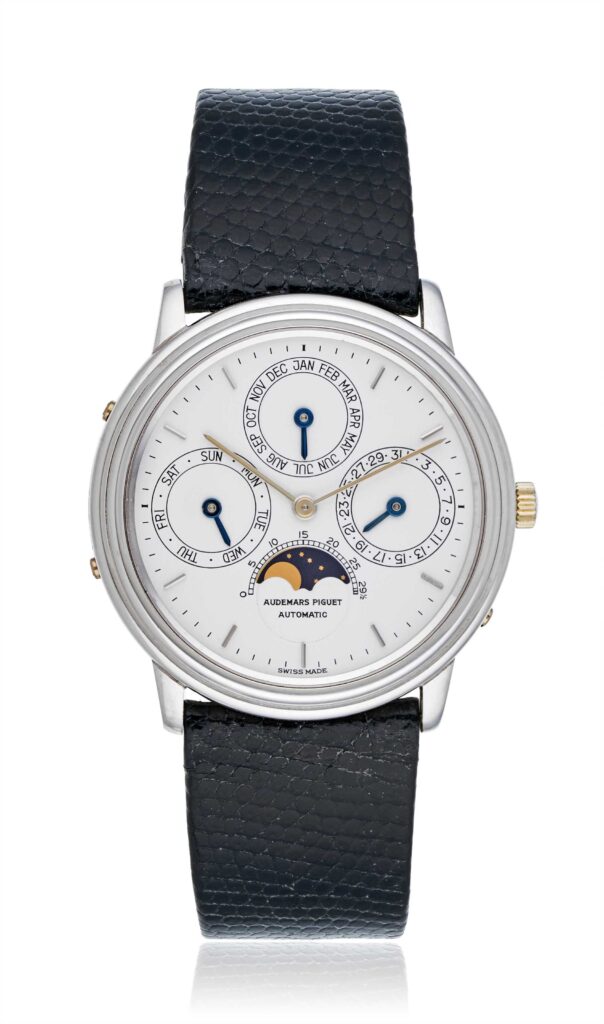
This reference accounted for just under 3000 exemplars, in various configurations/variants.
Thanks to its unprecedented thickness (or rather, slimness), accompanied by innovative Audemars design canons, it became a “must-have” amongst collectors.
There is still much debate about the significance of this model, but many believe that it was the ref. 5548 – not the Royal Oak – which “saved” Audemars Piguet from going under during the quartz crisis.
Speaking of…
1983 – The Royal Oak Perpetual Calendar
The “cash-cow” of Audemars Piguet needs no introduction. First released in 1972, the Royal Oak is single-handedly responsible for the brand’s present-day dominance.
Eleven years after its introduction, the octagonal masterpiece got the perpetual calendar treatment: the Audemars Piguet Royal Oak Quantième Perpetuél ref. 5554.
The movement? None other than the caliber 2120/2800, of course.
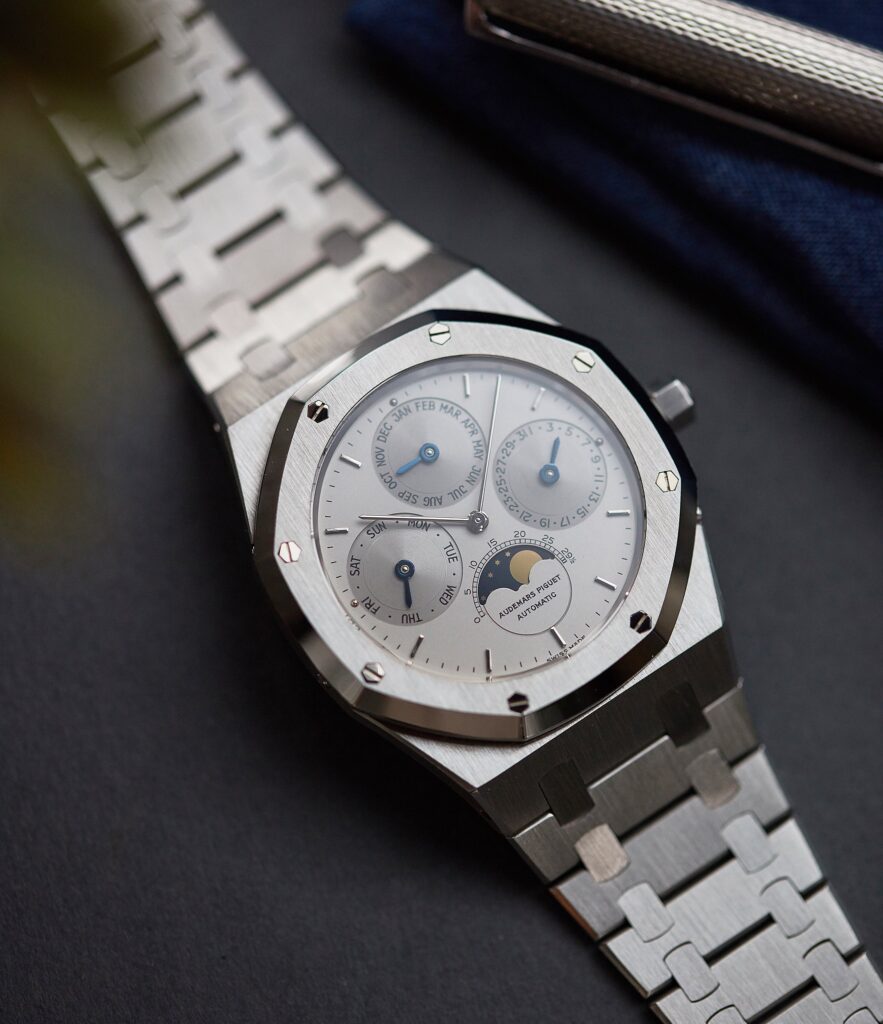
The 279 exemplars (49 in steel, 229 in gold, and 1 in platinum) of this reference characterised a fundamental period in Audemars Piguet’s lifetime, as they were still battling the quartz crisis.
Its dimensions were equal to the Royal Oak’s “little brother” (Jumbo) at 39mm, but still, did not feature the leap year indicator.
The second series of the Audemars Piguet Royal Oak Quantième Perpetuél – the ref. 25636 – arrived in 1986.
Dial-wise, it was pretty much identical to the ref. 5554, but it distinguished itself through its ample range of material configurability.
In fact, for the first time, Audemars Piguet was utilising rose gold on this model, and the number of platinum exemplars increased to 34.
This series also marked AP’s exploration of “two-tone” for this model, none more rare and beautiful than the rose gold case and bracelet and platinum link and bezel configuration.
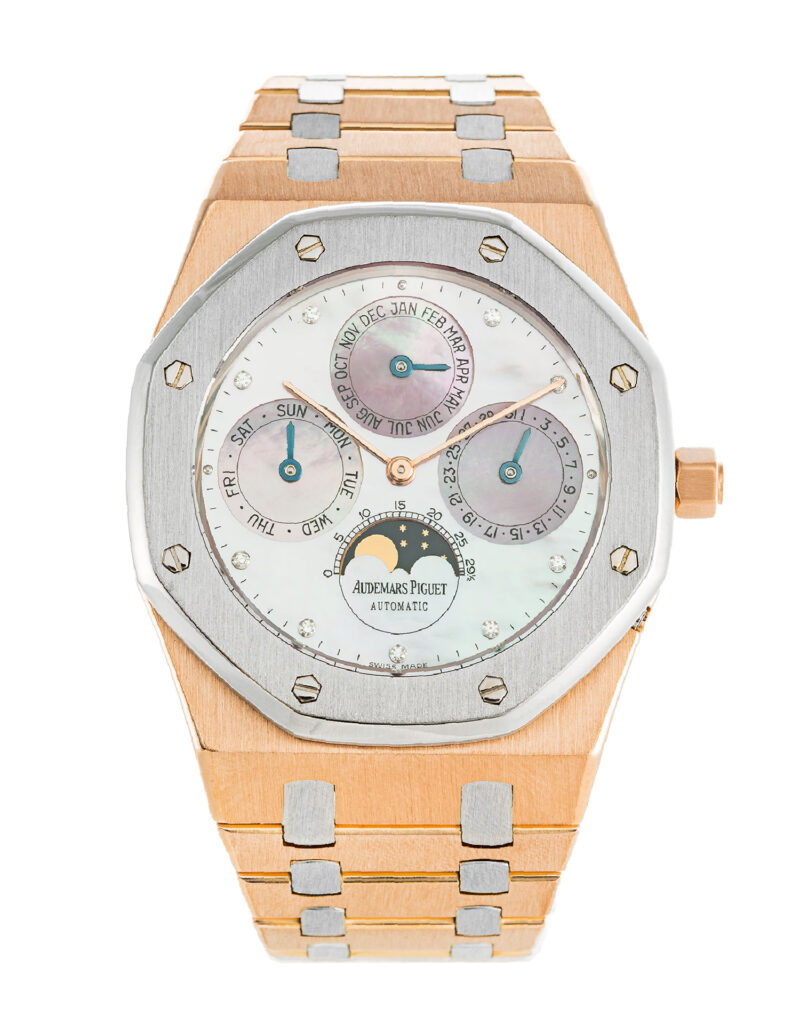
The third series, the reference 5654/25654 was produced between 1989 and 1990. Like the two series which came before it – still – did not have the leap year indicator.
Gaining notable popularity, this reference comprised of nearly 800 exemplars, with 9 configurations, including: steel, rose gold, yellow gold, and even rose gold with platinum.
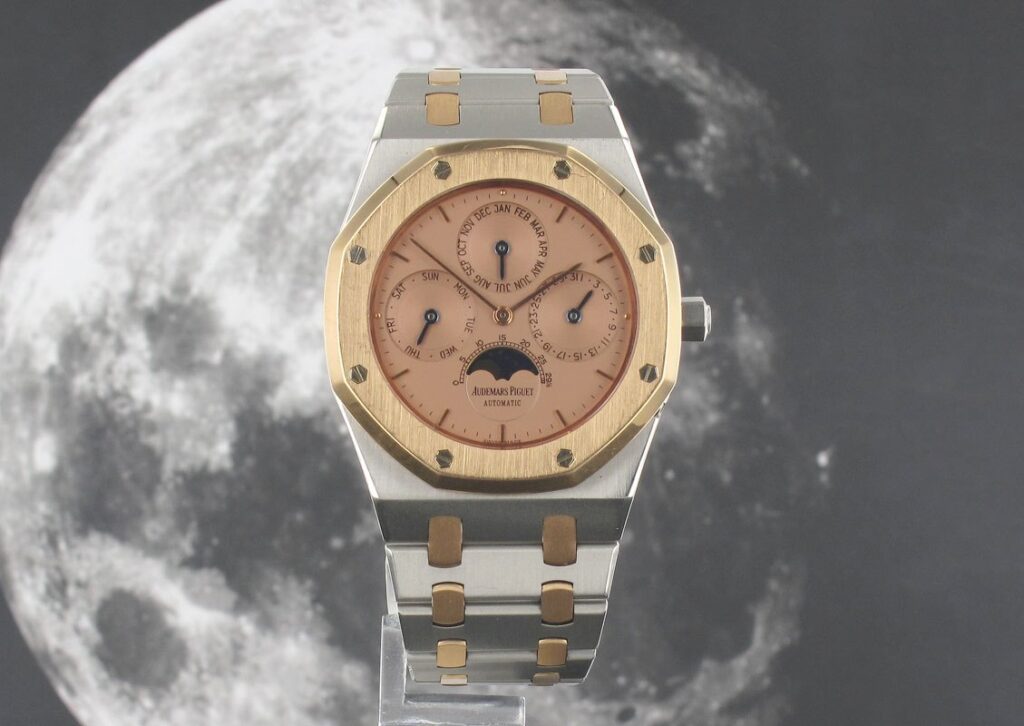
1993 – The new caliber 2120/2802.
A milestone was reached in 1993 with the production of the in-house Audemars Piguet caliber 2120/2802.
This new movement was a more refined version of the historic 2120/2800, which, as well as including the leap year indicator, also featured a week number indicator.
The new movement also marked a new period of mass experimentation when it came to Audemars Piguet’s perpetual calendar models.
For example, in 1995, one of the first Royal Oak Quantième Perpetuéls that was released was the automatic version of the special 120 year anniversary edition.

All 120 exemplars of this model were exclusively in rose gold, and featured an “1875-1995” inscription on the lunar phase subdial.
And yes, finally, at the 12 o’clock position, we can find the month indicator, whose secondary hand points to the leap year function.
The cal. 2120/2802 was employed on all automatic versions of the Quantième Perpetuél line. Across this 20-year period, Audemars Piguet explored all possibilities, designing some of the most interesting and famous configurations that can be found on the market.
Some of our favourites include the stunning Royal Oak Quantième Perpetuél in platinum and tantalum (ref. 25820), and the series of skeletonised models (ref. 25829), available in rose gold, yellow gold, platinum and steel.

Grande Complications
Inspired by the cal. 2120/2802, Audemars Piguet’s engineers designed and manufactured the caliber 2885, incorporating it in the brand’s first Grand Complication wristwatch.
Only a handful of these ref. 25865s were produced: mostly in white gold, with one titanium exemplar, and one in black PVD-coated steel.

As the name would suggest, the watch features a perpetual calendar, minute repeater, and a rattrappante chronograph, all within a 39mm case.
2015 – The caliber 5134 & transition to 41mm
In 2012, Audemars Piguet launched their 41mm time-only Royal Oak collection, and in 2015, the perpetual calendar (ref. 26574) followed suit.
These new dimensions allowed for the creation of the all-new cal. 5134: an evolutuion of the base 2120/2800 from many years before.

Audemars Piguet offered this new ref. 26574 in four configurations: 2 in steel, and 2 in rose gold. Regardless of the version, these new 41mm dimensions made it a much cleaner dial, allowing for all the functions to be more legible.
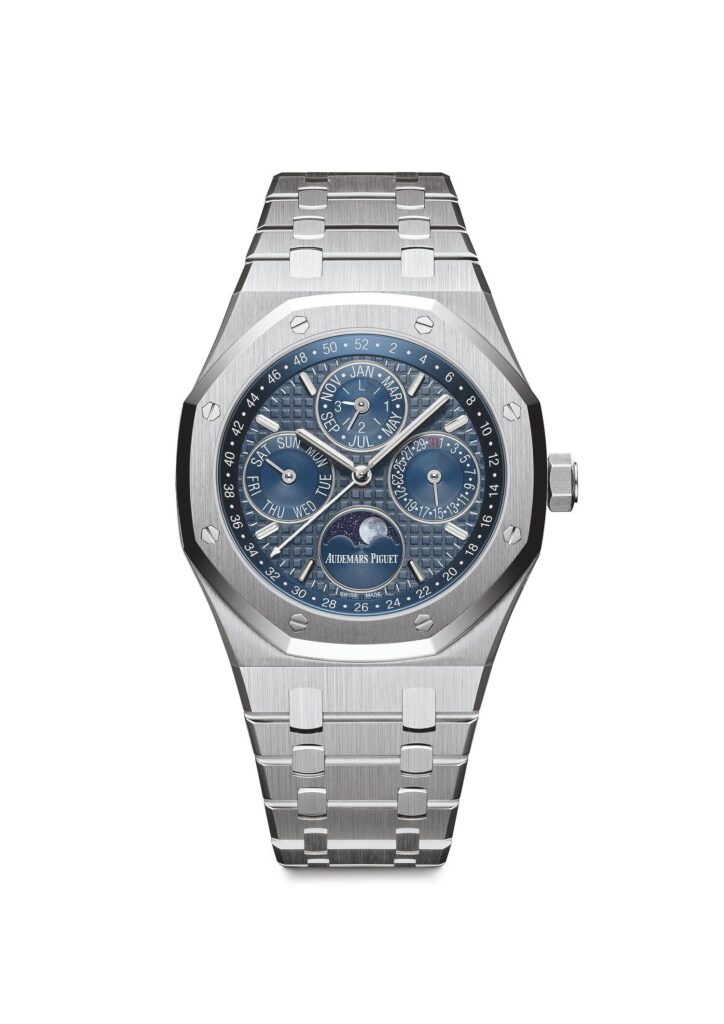
Moreover, the clear caseback let the user admire the expertly crafted and finished movement.
There were numerous versions of the ref. 26574 over the years, with various dial colours or case and bracelet materials.
Less numerous, in fact, quite the opposite, were the limited editions.
One which immediately springs to mind is the ref. 26609: this automatic perpetual calendar was produced in a hyper limited run of 88 pieces, made exclusively for the Asian market and was co-designed by renowned collector Horoloupe.

Released on the 2020 Chinese New Year, the timepiece is entirely made from titanium, and features a grey Grand Tapisserie dial, as well as a clear caseback and all the trimmings of an AP perpetual calendar.
2018 – Royal Oak Perpetual Calendar Ultra-Thin RD2.
2018 was the last time (for now) that a major development occurred in Audemars Piguet’s perpetual calendar department.
At the 2018 edition of SIHH Geneva, the Royal Oak Automatic Perpetual Calendar Ultra-Thin RD2 was introduced.
This model was nothing short of revolutionary: the ref. 26586IP contains the in-house, ultra-thin cal. 5133, measuring a staggering 0.35mm thick.
A controversial, but also welcomed change, the Grande Tapisserie dial motif was swapped out for a satin finished blue tone.

Another departure was of the week number indicator, normally found around the outer perimeter of the dial. This was probably due to the reduced dimensions.
Thanks to the extremely innovative and thin movement, the whole case was reduced to 6.3mm thick, making it the thinnest automatic perpetual calendar in the world, and winning the brand the Aiguille d’Or award at the GPHG convention.
-Written by Giulio Minetto
-Translated by Patrick R.

